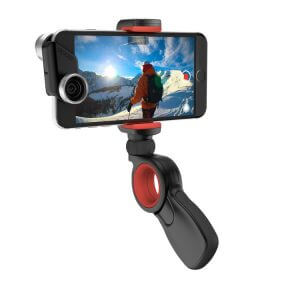 OnePlus have announced the launch event for the OnePlus 10 Pro 5G in Europe, North America and India – it’s going to be 1500 BST on Thursday 31st March 2022. That’s next week and yes, the clocks go forward this weekend (if you are in Europe). The 10 Pro’s been available in China for a couple of months now, so it’s good to see it coming to other countries.
OnePlus have announced the launch event for the OnePlus 10 Pro 5G in Europe, North America and India – it’s going to be 1500 BST on Thursday 31st March 2022. That’s next week and yes, the clocks go forward this weekend (if you are in Europe). The 10 Pro’s been available in China for a couple of months now, so it’s good to see it coming to other countries.
 To celebrate the news and the on-going collaboration with Hasselblad, OnePlus strapped a 10 Pro to a weather balloon and sent it 38,000 m up to take a few pictures. Ok, so it wasn’t quite as straightforward as that….
To celebrate the news and the on-going collaboration with Hasselblad, OnePlus strapped a 10 Pro to a weather balloon and sent it 38,000 m up to take a few pictures. Ok, so it wasn’t quite as straightforward as that….
The team built a light-weight module, nicknamed The Stratosphone, to house the phones and protect them from the wind and cold (-60 C). As remote control wasn’t possible – 38 km is a bit far for Bluetooth – a special app was developed to help take pictures and try to get the best shot possible. The team were able to retrieve the module and cameras – some of the pictures are spectacular! Click through on any of the photos to see more detail.
The OnePlus 10 Pro is the first OnePlus phone equipped with a camera system to take pictures in full 10-bit colour to deliver a more natural and delicate display of colour in every photo. In theory, the benefit of 10-bit colour is smoother colour transitions in photos without colour banding and the ability to manage 64 times more colour than in 8-bit colour. Although it might seem this would be imperceptible to most people, it means that professionals can work with the full10 bits before any final conversions for output.
Kate Parkyn, Associate Marketing Director, OnePlus Europe, said, “Since the launch of OnePlus 9 series, we have been in a close-knit strategic partnership with Hasselblad to co-create and improve on OnePlus flagship camera technology. This is the second year of our partnership with Hasselblad where we have further developed and improved the colour science with the second-generation Hasselblad Camera for Mobile. Our campaign is inspired by Hasselblad’s historical voyage to space to take images of the moon and we were confident that our camera too will be successful in delivering the same image quality. We are extremely delighted to see the stunning images of the horizon captured by OnePlus 10 Pro and proudly present this trusted camera quality to OnePlus users.”
Anyway, great pictures and great news about the OnePlus 10 Pro launch next week (1500 31/3/22). Tune in on all the usual channels. Apparently pre-orders for the 10 Pro will entitle the purchaser to free OnePlus Buds Pro wireless earphones which is a good bonus.





















 For some months now, persistent rumors have been flying that the next iPhone will do away with the 3.5mm wired headset port. There have been plenty of people arguing both against and for this idea. Some people say that the demise of the wired headset port is inevitable.
For some months now, persistent rumors have been flying that the next iPhone will do away with the 3.5mm wired headset port. There have been plenty of people arguing both against and for this idea. Some people say that the demise of the wired headset port is inevitable.